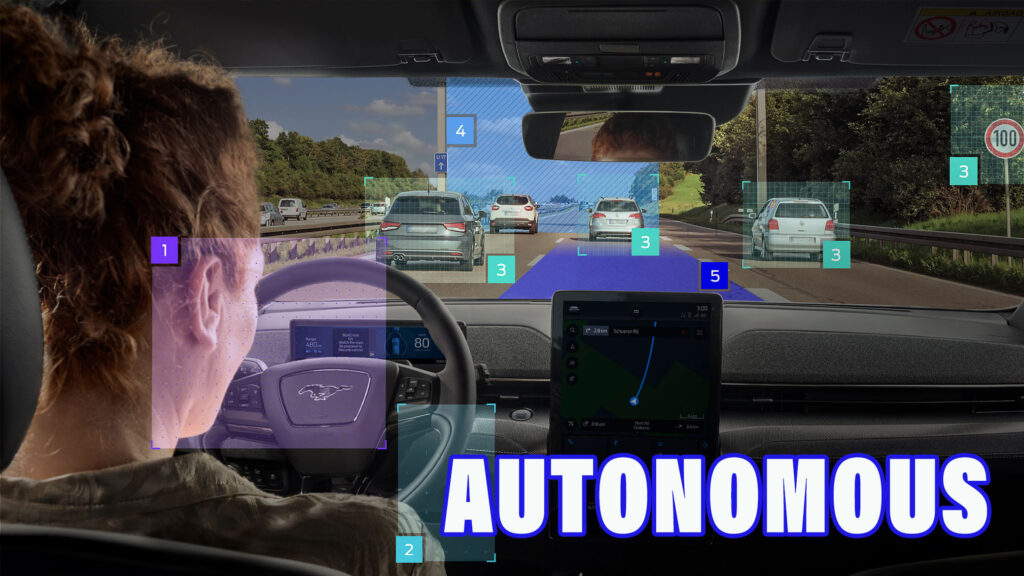Ford’s BlueCruise autonomous systems have been available in North America for a couple of years, but now European Ford fans can finally get a taste of the hands-off action.
The UK is the first European market to get approval for the technology, which can be activated on 2,300 miles (3,700 km) of pre-mapped motorways, or what Ford calls Blue Zones, in England, Scotland and Wales. It’s currently only available on the Mustang Mach-E, each car coming with 90 days of free usage to hook drivers into the idea of kicking back behind the wheel, after which they can continue to use the service by signing up for a £17.99 ($22.40) monthly subscription.
BlueCruise works at speeds as high as 80 mph (130 kmh) and controls the Mach-E’s steering, acceleration and braking, including in traffic jams, allowing drivers (or should that be passengers?) to remove their hands from the wheel for more than the 25 seconds or so that most basic autonomous systems offer. But the small print to go with BlueCruise’s “hands-off, eyes-on” slogan is that the driver has to keep watching the road, and face detection software will ensure you do (even if you’re wearing glasses), deactivating the autonomous system if you don’t comply.
Related: Ford Is Getting Out Of The Level 4 Self-Driving Car Game
That differentiates Ford’s Level 2 system from the Level 3 driverless tech offered by Mercedes in cars like the S-Class. Benz’s more sophisticated Drive Pilot uses Lidar, which the Ford doesn’t have, and will let you watch a movie, work on your laptop or scroll trash on your phone, while it handles driving duties, but only up to around 37 mph (60 kmh), though that may be increased to 80 mph very soon.
Ford recently announced it was withdrawing its petition with the NHTSA to be granted the freedom to test Level 4 autonomous cars on the road, but it hasn’t completely abandoned the idea of fully driverless cars. At Ford’s Cologne EV hub in Germany where production of the new electric Explorer begins this year, the company has begun a 30-month trial of the E-SELF program that enables finished cars to drive off the line to final testing stations, and then recharge by themselves, ready for delivery to customers. The autonomous systems in this case don’t rely on the car’s sensors, but up to 200 cameras set up in the factory.








